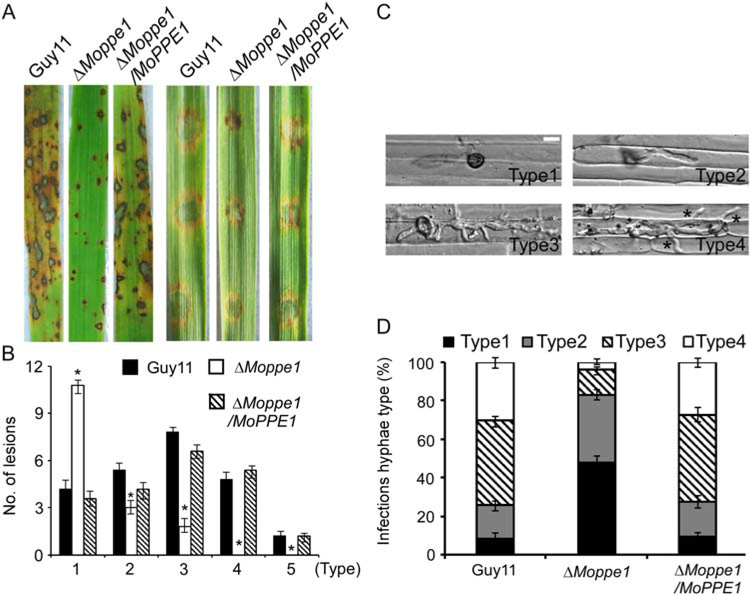Fig. 2.
MoPpe1 is important for full virulence. A. Two week-old rice seedlings (Oryza sativa cv. CO-39) were sprayed with 4 ml conidial suspension (5 × 104 conidia/ml) and examined at 7 dpi. Separated barley leaves were drop-inoculated with same conidial suspensions and examined at 5 dpi. Experiments were repeated for three times with similar results. B. Lesions were measured at 7 dpi, numbers within an area of 1.5 cm2 were counted, quantification of lesion types (0, no lesion; 1, pinhead-sized brown specks; 2, 1.5 mm brown spots; 3, 2–3 mm grey spots with brown margins; 4, many elliptical grey spots longer than 3 mm; 5, coalesced lesions infecting 50% or more of the leaf area. Error bars represent the standard deviations. Asterisks represent significant differences (Duncan’s new multiple range test, p < 0.01). C. Conidial suspensions of three different strains were injected into separate rice sheaths and observed at 36 h postinoculation (hpi) (Type 1, no penetration; Type2, only with a single invasive hypha (IH) without branches; Type 3, with 1–3 branches but restricted in one cell; Type 4, more than three branches and extended to neighbouring cell. Asterisks indicate IH extended to surrounding cells. Bar = 5 μm. D. Percentages of different types of infectious hyphae in rice cells. Sample size (n) =50. Error bars represent the standard deviations.

